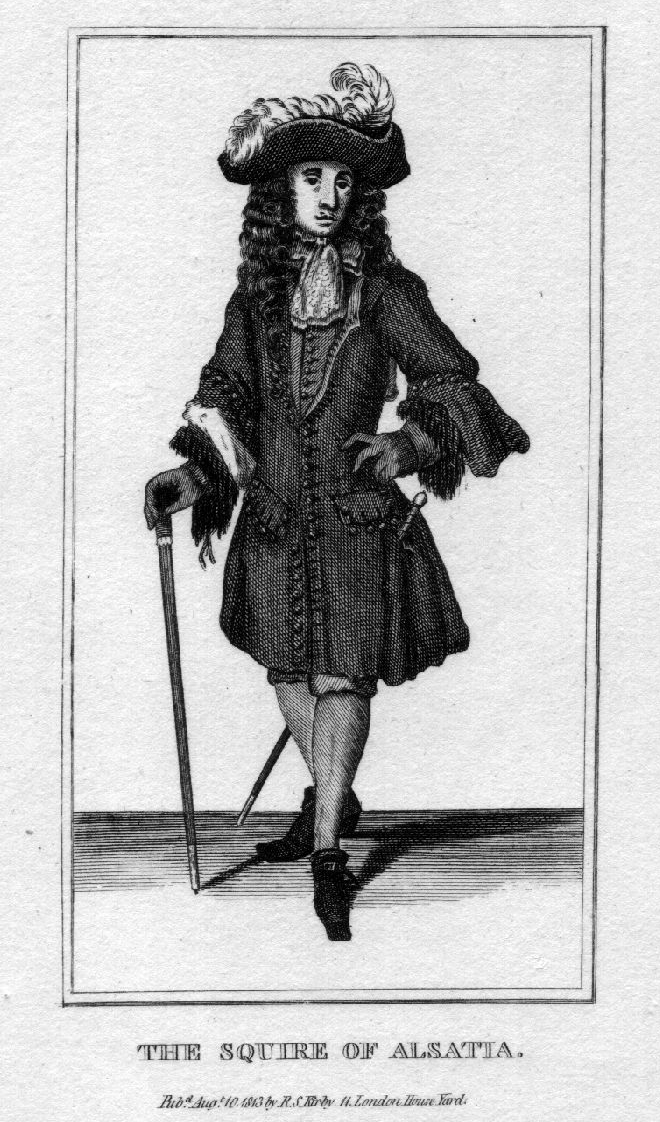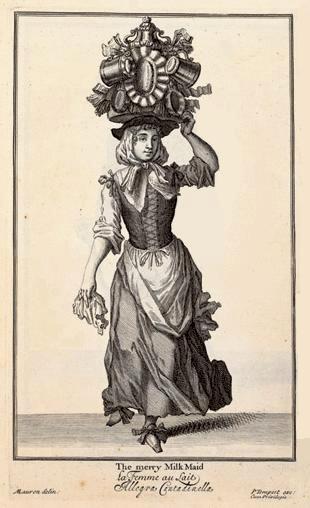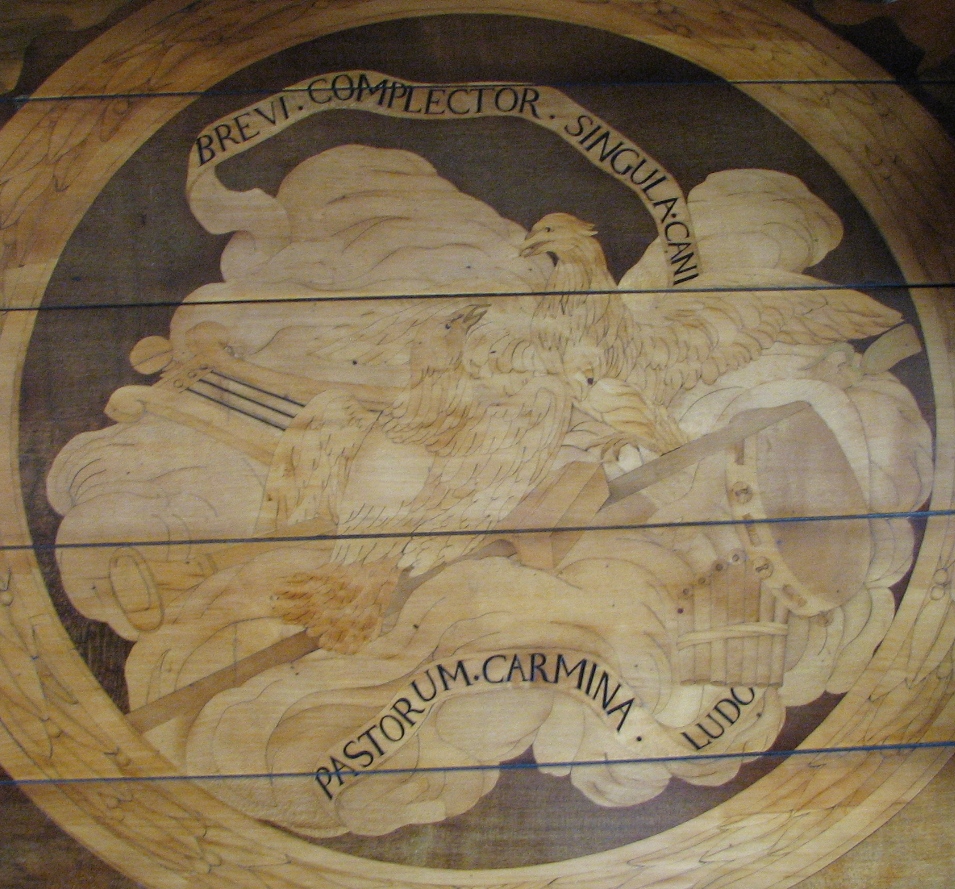|
Pierce Tempest
Pierce Tempest (1653–1717) was an English printseller, best known for the series ''Cryes of the City of London''. Life Born at Tong, Yorkshire, in July 1653, he was the sixth son of Henry Tempest of Tong by his wife, Mary Bushall, and brother of Sir John Tempest, 1st Baronet. It is said that he was a pupil and assistant of Wenceslaus Hollar, and some of the prints which bear his name as the publisher have been assumed to be his own work; but there is no actual evidence that he ever practised engraving. Tempest died on 1 April 1717, and was buried at St. Paul's, Covent Garden, London. There is a mezzotint portrait of him by Place, after G. Heemskerk, with the motto "Cavete vobis principes", and the figure of a nonconformist minister in the ''Cryes'' is said to represent him. Works Establishing himself in The Strand as a book and print seller about 1680, Tempest issued some sets of plates of birds and beasts etched by Francis Place and John Griffier from drawings by Francis ... [...More Info...] [...Related Items...] OR: [Wikipedia] [Google] [Baidu] |
Pierce Tempest
Pierce Tempest (1653–1717) was an English printseller, best known for the series ''Cryes of the City of London''. Life Born at Tong, Yorkshire, in July 1653, he was the sixth son of Henry Tempest of Tong by his wife, Mary Bushall, and brother of Sir John Tempest, 1st Baronet. It is said that he was a pupil and assistant of Wenceslaus Hollar, and some of the prints which bear his name as the publisher have been assumed to be his own work; but there is no actual evidence that he ever practised engraving. Tempest died on 1 April 1717, and was buried at St. Paul's, Covent Garden, London. There is a mezzotint portrait of him by Place, after G. Heemskerk, with the motto "Cavete vobis principes", and the figure of a nonconformist minister in the ''Cryes'' is said to represent him. Works Establishing himself in The Strand as a book and print seller about 1680, Tempest issued some sets of plates of birds and beasts etched by Francis Place and John Griffier from drawings by Francis ... [...More Info...] [...Related Items...] OR: [Wikipedia] [Google] [Baidu] |
Mezzotint
Mezzotint is a monochrome printmaking process of the '' intaglio'' family. It was the first printing process that yielded half-tones without using line- or dot-based techniques like hatching, cross-hatching or stipple. Mezzotint achieves tonality by roughening a metal plate with thousands of little dots made by a metal tool with small teeth, called a "rocker". In printing, the tiny pits in the plate retain the ink when the face of the plate is wiped clean. This technique can achieve a high level of quality and richness in the print. ''Mezzotint'' is often combined with other ''intaglio'' techniques, usually etching and engraving. The process was especially widely used in England from the eighteenth century, to reproduce portraits and other paintings. It was somewhat in competition with the other main tonal technique of the day, aquatint. Since the mid-nineteenth century it has been relatively little used, as lithography and other techniques produced comparable results more easil ... [...More Info...] [...Related Items...] OR: [Wikipedia] [Google] [Baidu] |
1653 Births
Events January–March * January 3 – By the Coonan Cross Oath, the Eastern Church in India cuts itself off from colonial Portuguese tutelage. * January– The Swiss Peasant War begins after magistrates meeting at Lucerne refuse to hear from a group of peasants who have been financially hurt by the devaluation of the currency issued from Bern. * February 2 – New Amsterdam (later renamed New York City) is incorporated. * February 3 – Cardinal Mazarin returns to Paris from exile. * February 10 – Swiss peasant war of 1653: Peasants from the Entlebuch valley in Switzerland assemble at Heiligkreuz to organize a plan to suspend all tax payments to the authorities in the canton of Lucerne, after having been snubbed at a magisterial meeting in Lucerne. More communities in the canton join in an alliance concluded at Wolhusen on February 26. * February – The Morning Star Rebellion (''Morgonstjärneupproret'') of peasants breaks out in Swede ... [...More Info...] [...Related Items...] OR: [Wikipedia] [Google] [Baidu] |
John Savage (engraver)
John Savage ( fl. 1683–1701) was an engraver and printseller in London. Life Savage was said to be French, and therefore may have been a Huguenot exile. He resided in Denmark Court, The Strand, until he purchased the plates and took over the business of Isaac Beckett at the Golden Head in the Old Bailey. Later he moved to the Golden Head in St. Paul's Churchyard, a hub of the publishing and printmaking industry near Doctors' Commons.Shesgreen p.65 Works Savage produced book illustrations and portraits which he published as frontispieces or separately, as well as playing and trade cards, and from 1683 he was the engraver of the plates for the ''Philosophical Transactions of the Royal Society''. Though he had bought Beckett's stock of mezzotint plates and continued to offer mezzotints, the plates he produced himself were only etchings and engravings. His plates included: *"The Antipapists": portraits of the Duke of Monmouth and Duke of Argyll, Arthur Capell, 1st Earl of Essex, ... [...More Info...] [...Related Items...] OR: [Wikipedia] [Google] [Baidu] |
Marcellus Laroon The Elder
Marcellus Laroon or Lauron, the elder (1653–1702) was a Dutch-born painter and engraver, active in England. He provided the drawings for the popular series of prints "The Cries of London". Life He was born at The Hague, the son of Marcellus Lauron, a painter of French extraction who settled in the Netherlands. He began his artistic education with his father, who took him to be taken to England at an early age. According to brief biographies by Horace Walpole and Bainbrigg Buckeridge he was taught by one "La Zoon" before studying under one of the Flessiers, a family of Dutch painters and framemakers working in London in the mid-17th century. He spent several years in Yorkshire, and later told George Vertue that he had seen Rembrandt at Kingston upon Hull in 1661. He had settled in London by 1674, the year in which he became a member of the Painter-Stainers Company. He lived in Bow Street, Covent Garden. He was frequently employed to paint draperies for Sir Godfrey Knelle ... [...More Info...] [...Related Items...] OR: [Wikipedia] [Google] [Baidu] |
William Lodge
William Lodge (July 4, 1649 – 1689) was an English engraver and printmaker of the Baroque period. Life He was born in Yorkshire, where his father was a merchant, and he inherited a degree of financial independence. Lodge was educated first at Leeds, then at Jesus College in Cambridge, then studied law at Lincoln's Inn. He however mostly appears to have been employed in drawing and engraving. He was a friend of the fellow engraver, Francis Place, and enjoyed an informal salon of intellectuals at York. These included Dr. Martin Lister, Ralph Thoresby, and Henry Gyles the glass painter. Works Lodge is known best for his engravings. When he accompanied Thomas Belasyse, Earl of Fanconbery, on his embassy to Venice, he became acquainted with a picture book, ''Viaggio Pittoresco'', by Giacomo BarriTicozzi page 114.). The chapters were introduced by a vedute of a city or town of Italy, and followed by a series of engravings of famous paintings in that locus. Lodge had the book republi ... [...More Info...] [...Related Items...] OR: [Wikipedia] [Google] [Baidu] |
Isaac Fuller The Younger
Isaac Fuller (1606(?) – 1672) was an English painter. Trained in France, he worked in Oxford and London. His works included portraits, religious subjects and decorative paintings. Early life and education Fuller is often said to have been born in 1606, but may have been born as late as 1620. According to Bainbrigge Buckeridge, writing at the beginning of the 18th century, he studied under the French Baroque painter François Perrier in Paris. Work in Oxford During the earlier part of the 1660s Fuller decorated the chapels of Magdalen and All Souls Colleges at Oxford. His work at Magdalen representing the ''Resurrection'' is lost, but a print survives, showing a complex and ambitious composition derived ultimately from Michelangelo. At All Souls he painted a fresco of '' The Last Judgement'', which is also lost, although some additional panels by Fuller, originally fitted between the roof-trusses in the chancel, survive. John Evelyn said that the fresco would not last long, ... [...More Info...] [...Related Items...] OR: [Wikipedia] [Google] [Baidu] |
Cesare Ripa
Cesare Ripa (c. 1555, Perugia – Rome) was an Italian iconographer who worked for Cardinal Anton Maria Salviati as a cook and butler. Life Little is known about his life. He was born of humble origin in Perugia about 1555. The exact date of his birth has never been established. He was very active in academic circles as member of the Filomati and the Intronati in Siena, both dedicated to the study of antiquities and of Greek and Latin literature, and the Insensati in his native Perugia. While still very young he went to Rome to work at the court of Cardinal Antonio Maria Salviati. He attended the Accademia degli Incitati the Accademia di San Luca, where he probably met the Dominican mathematician Ignazio Danti, and was introduced into the learned circles of Baroque Rome. In 1593 he published the first edition (without illustrations) of his ''Iconologia''; the work was highly successful, and went through several editions and subsequent translations. In 1598 Ripa was knighted ... [...More Info...] [...Related Items...] OR: [Wikipedia] [Google] [Baidu] |
Francis Barlow (artist)
Francis Barlow (c. 1626 – 1704) was an English painter, etcher, and illustrator. He ranks among the most prolific book-illustrators and printmakers of the 17th century, working across several genres: natural history, hunting and recreation, politics, and decoration and design. Barlow is known as "the father of British sporting painting"; he was Britain's first wildlife painter, beginning a tradition that reached a high-point a century later, in the work of George Stubbs. He was furthermore a pioneer in the history of comics by creating ''A True Narrative of the Horrid Hellish Popish Plot'' (c. 1682), a picture story about the life of Titus Oates and the Popish Plot, which is told in a series of illustrated sequences where the story is written underneath them and the characters depicted on those images use speech balloons to talk. While it is not the first example of its kind in history, it is one of the oldest which is signed. Life Barlow was born c. 1626 in Lincolns ... [...More Info...] [...Related Items...] OR: [Wikipedia] [Google] [Baidu] |
Tong, Yorkshire
Tong (population 17,069 - United Kingdom Census 2001, 2001 UK census) is a Ward (politics), ward within the City of Bradford Metropolitan District Council, West Yorkshire, England, named after Tong village which is its oldest settlement. The population at the 2011 Census was 20,608. Geography The ward is in the extreme south-east of Bradford District in a green wedge of land between the urban areas of Bradford and Leeds, the centre of the former being to the north-west and the centre of the latter being about to the north-east. Although surrounded by Green Belt, most of the settlements nearest to Tong are urban area, urban in character, Tong Street being to the west of the village, Drighlington to the south, Gildersome, to the south-east and New Farnley to the east (distances from the boundaries of the ward). The rural village of Bankhouse and the Moravian Church, Moravian settlement of Fulneck in Pudsey are about to the north of Tong with Cockersdale to the south-east ... [...More Info...] [...Related Items...] OR: [Wikipedia] [Google] [Baidu] |
John Griffier
Jan Griffier ( 1652 – 1718) was a Dutch Golden Age painter who was active in England, where he was admitted to the London Company of Painter-Stainers in 1677. Biography Griffier was born in Amsterdam and learned to paint landscapes and to engrave from Roelant Roghman. His birthdate is uncertain. According to Houbraken he was born in 1656, and according to English accounts he may have been older by up to 10 years, but in 1700 he was registered in Leiden in the ''Album studiosorum'' of the university art academy there as being 48 years old and living on the ''Stadstimmerwerf''. He produced views of Rhineland landscapes as well as of the English countryside, and returned to the Netherlands for a decade after ''ca'' 1695, but was engaged for at least two decades in England where he worked for the Dutch painter Jan Looten (1617/1618 – 1681). Griffier's work as a draughtsman reflects his training by Roghman; as an etcher, he is remembered for a series of plates of birds aft ... [...More Info...] [...Related Items...] OR: [Wikipedia] [Google] [Baidu] |
Francis Place (artist)
Francis Place (1647 – 21 September 1728) was an English gentleman draughtsman, potter, engraver and printmaker, active mainly in York. Biography He was the fifth son of Rowland Place (1616–1680) of Dinsdale, county Durham, and his wife, Catherine (died 1670), daughter and coheiress of Charles Wise of Copgrove, Yorkshire. Place entered law as his father had done, and was articled to an attorney at Gray's Inn until the outbreak of the plague forced him to leave both the profession and London in 1665. By this time, Place had already discovered a gift for drawing and engraving through his close friend Wenceslaus Hollar. About 1680 Place's interests and activities widened further as he became involved with the antiquarian group the York virtuosi, where he eventually settled. Place became a friend of many artists and antiquarians in and around York, including Ralph Thoresby and William Lodge, with whom Place went on many drawing and angling excursions. As a result of t ... [...More Info...] [...Related Items...] OR: [Wikipedia] [Google] [Baidu] |








